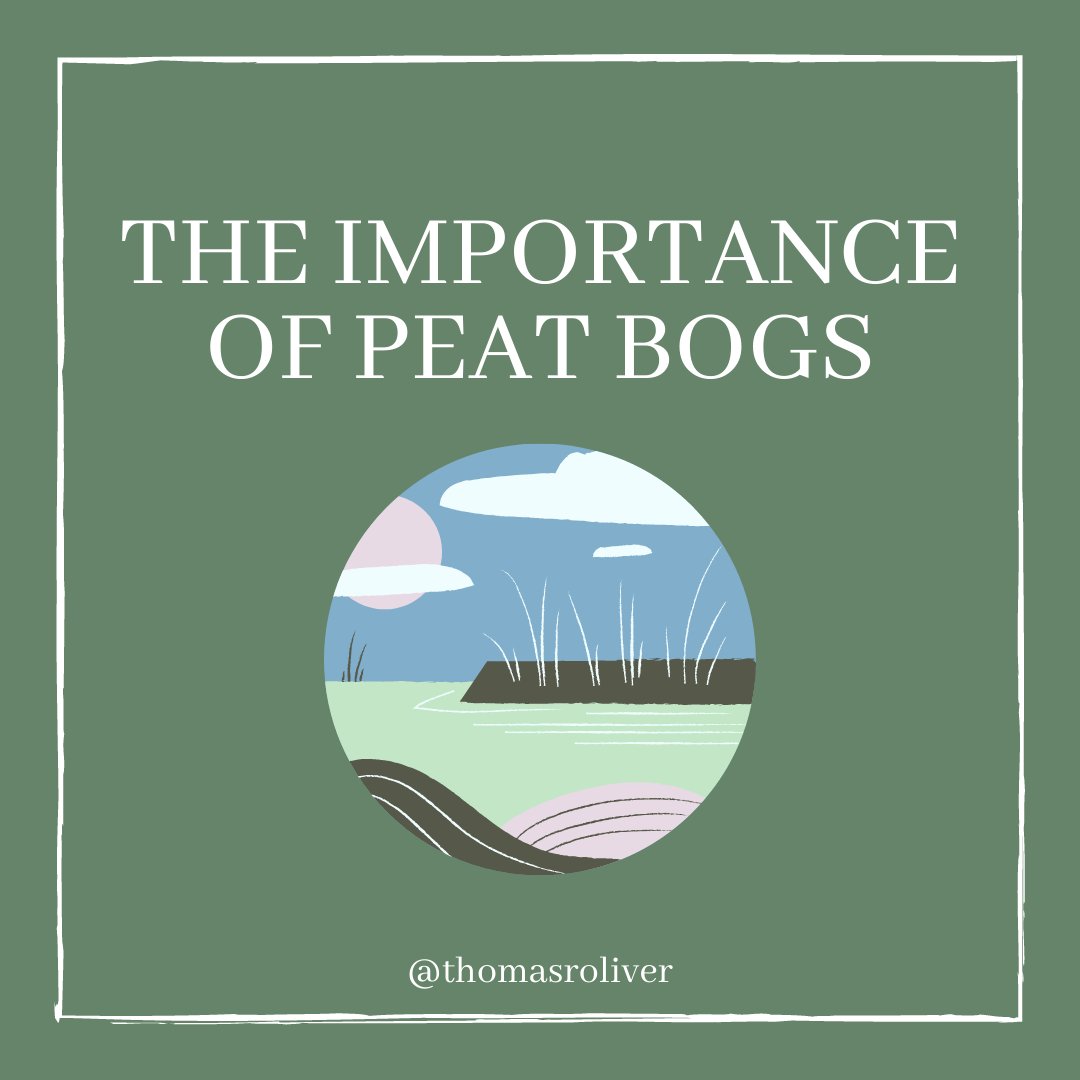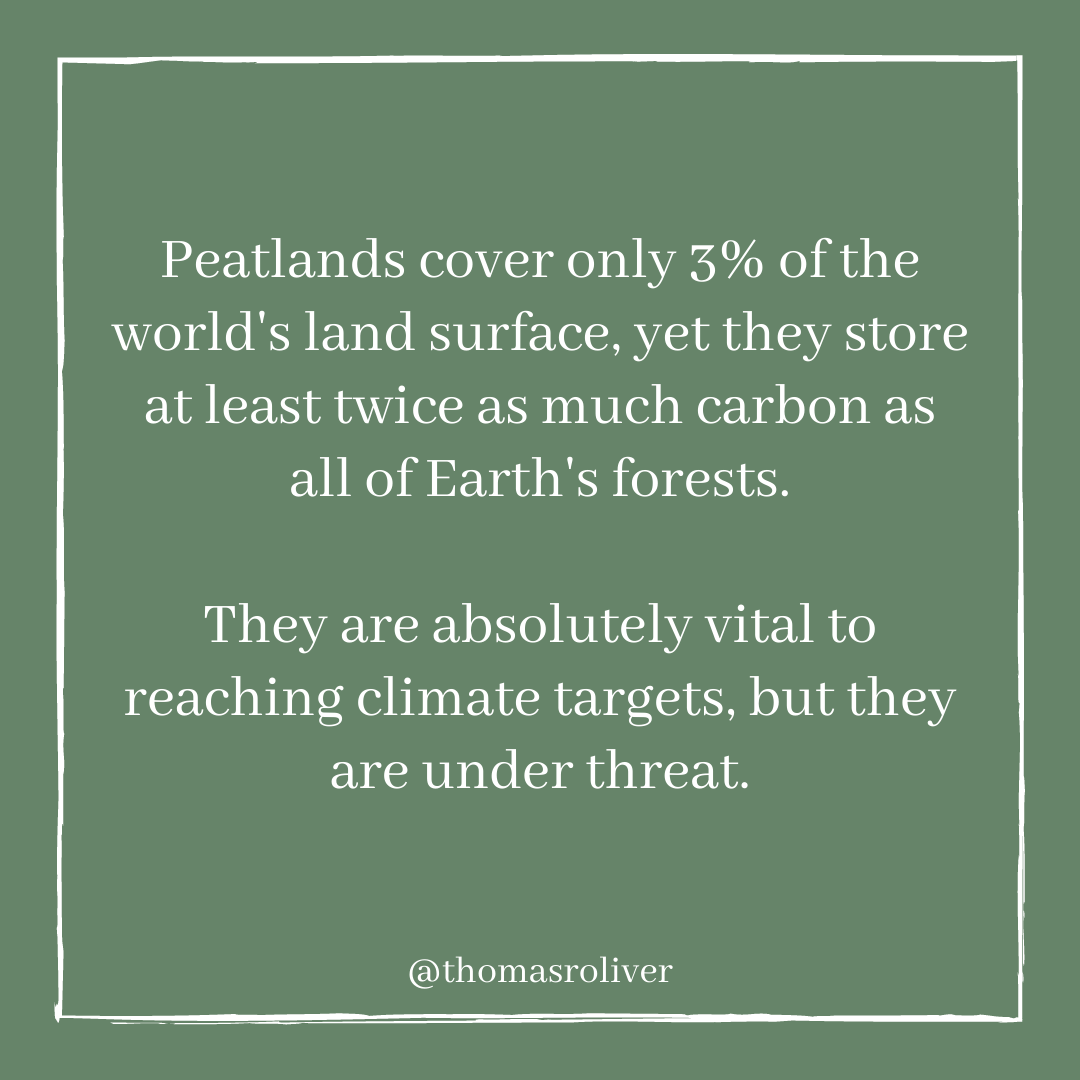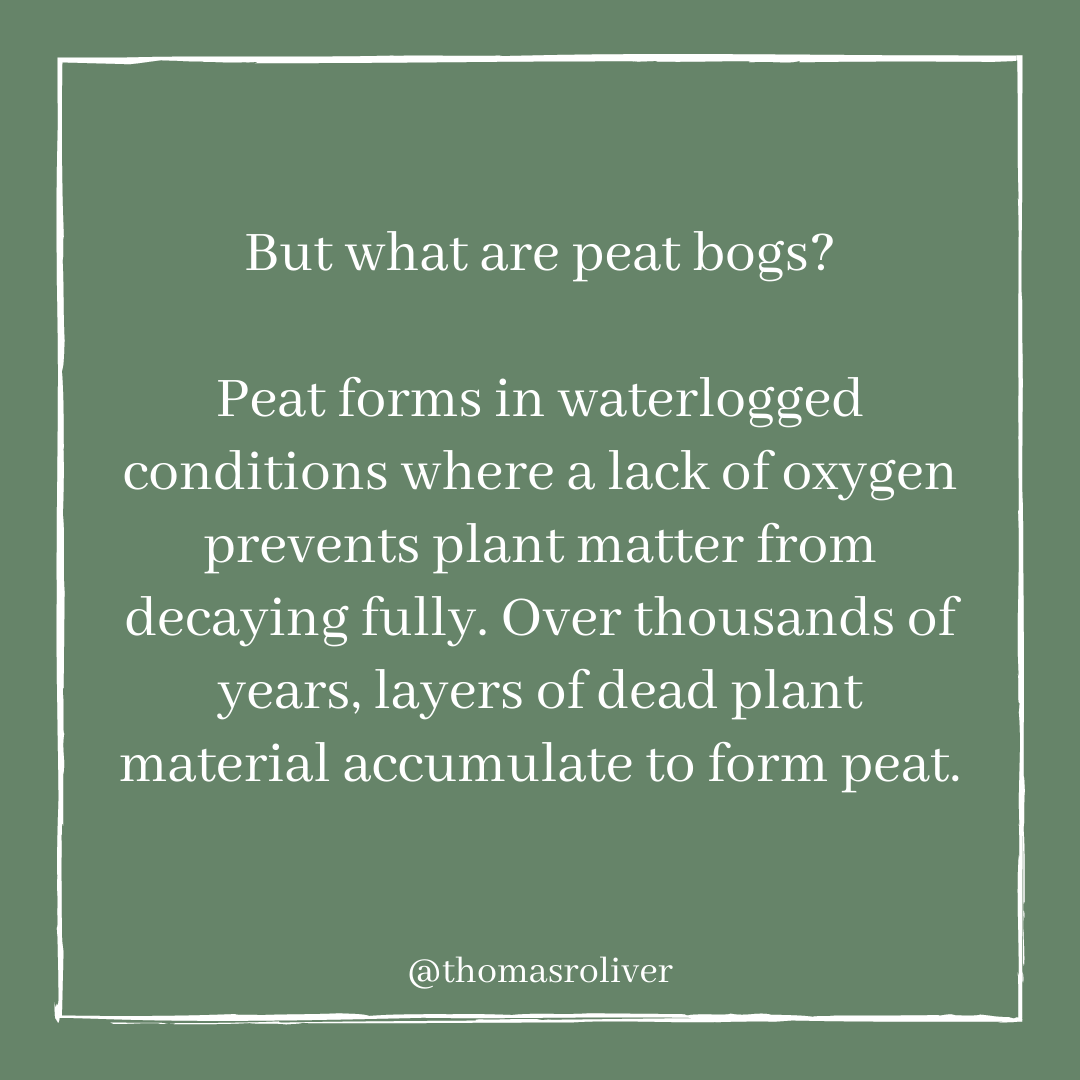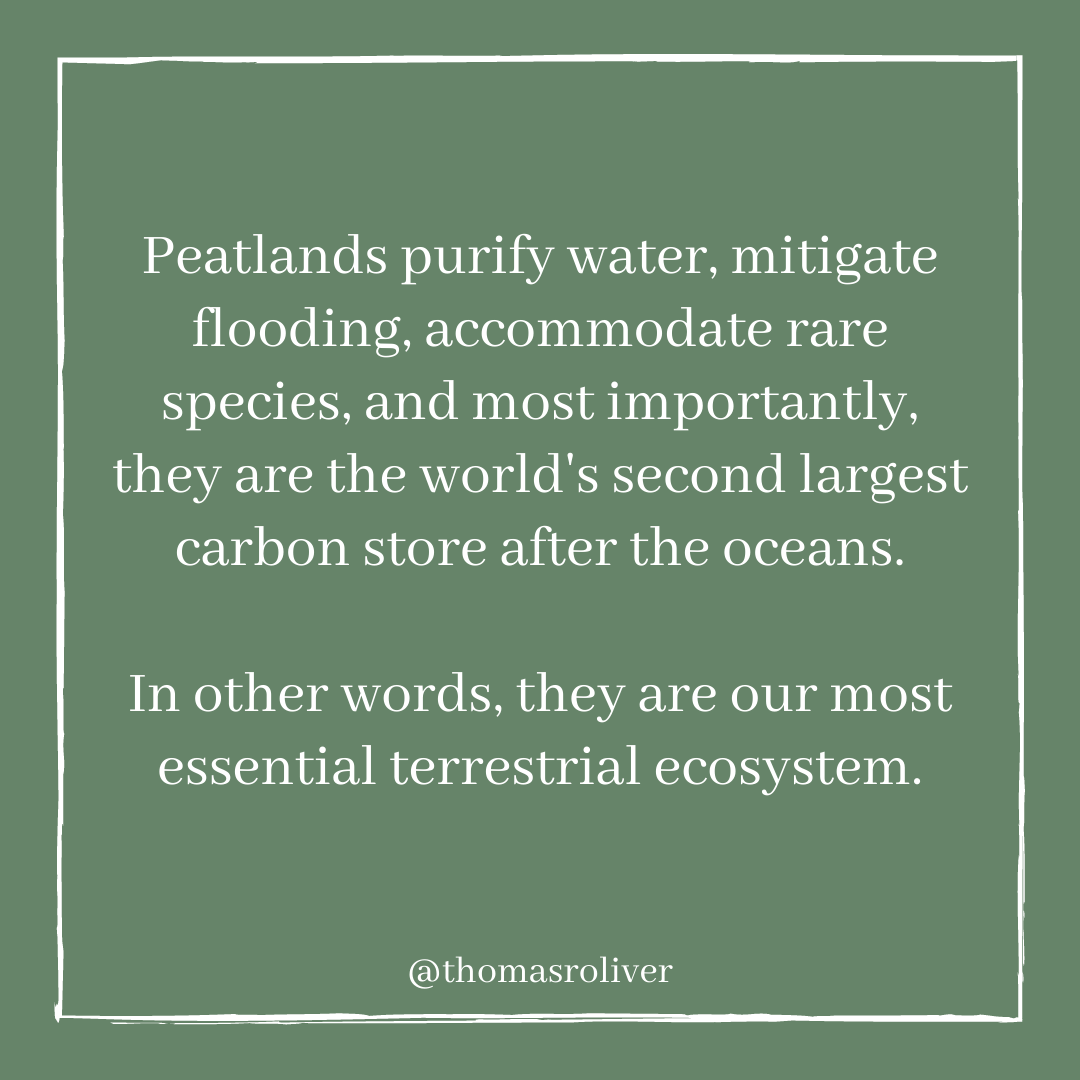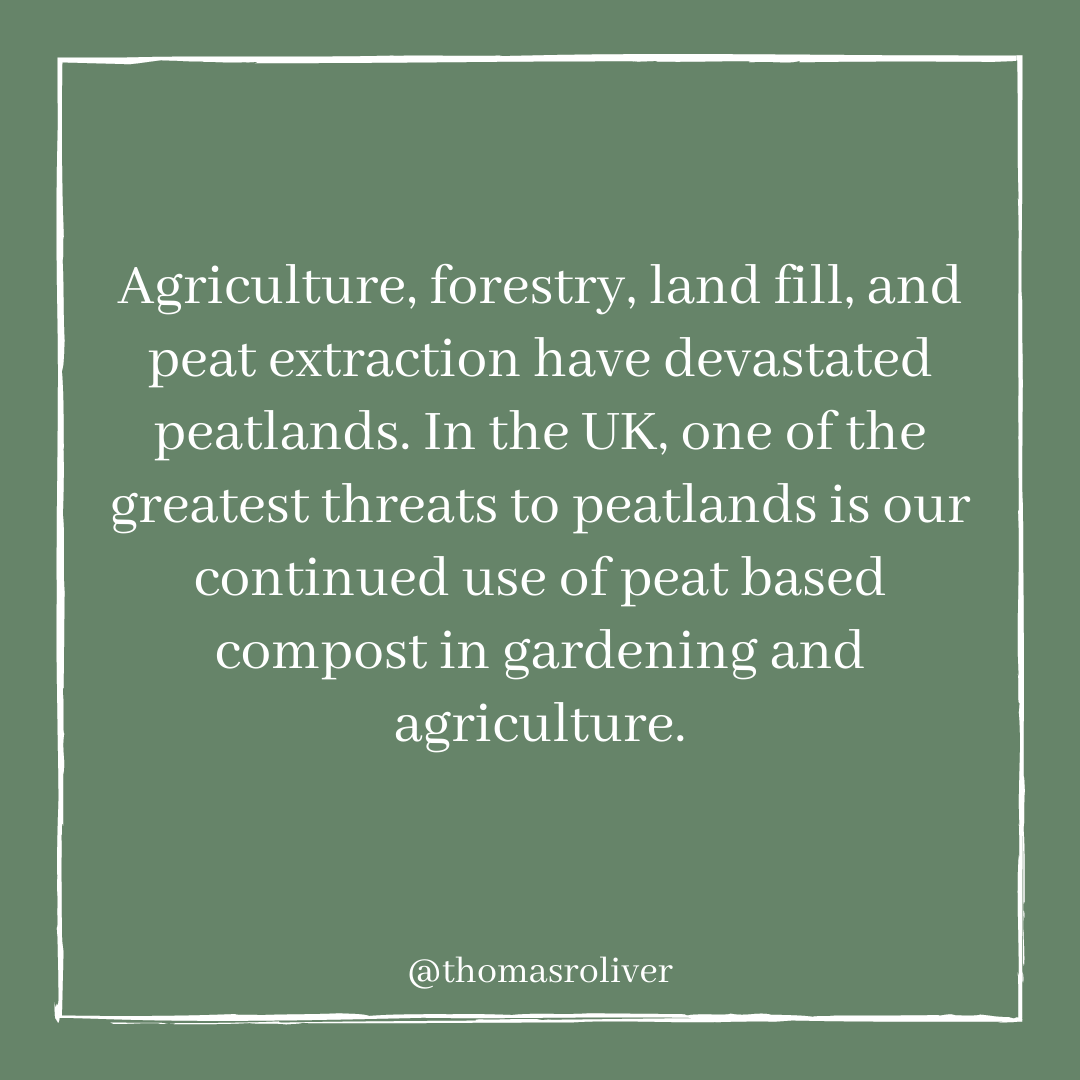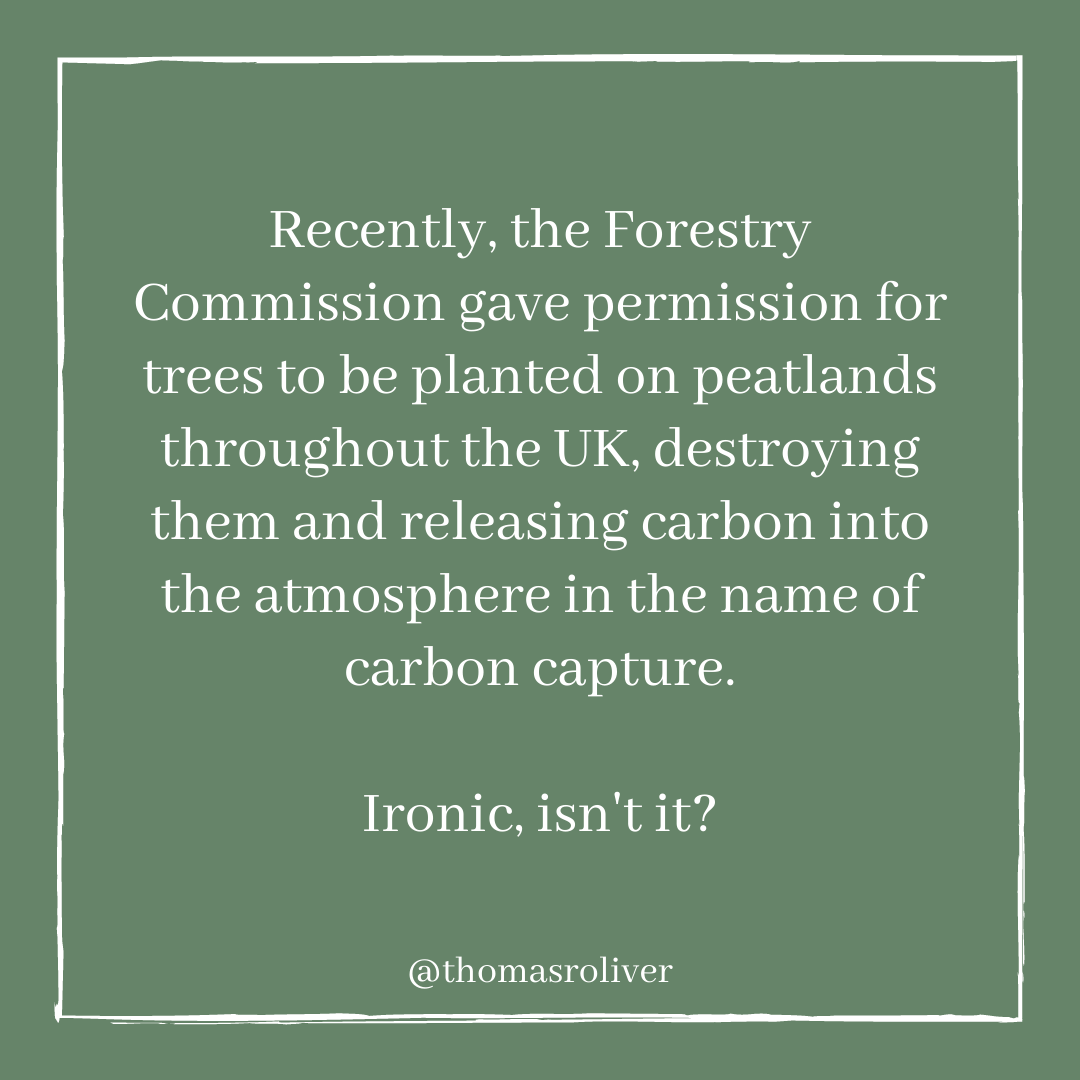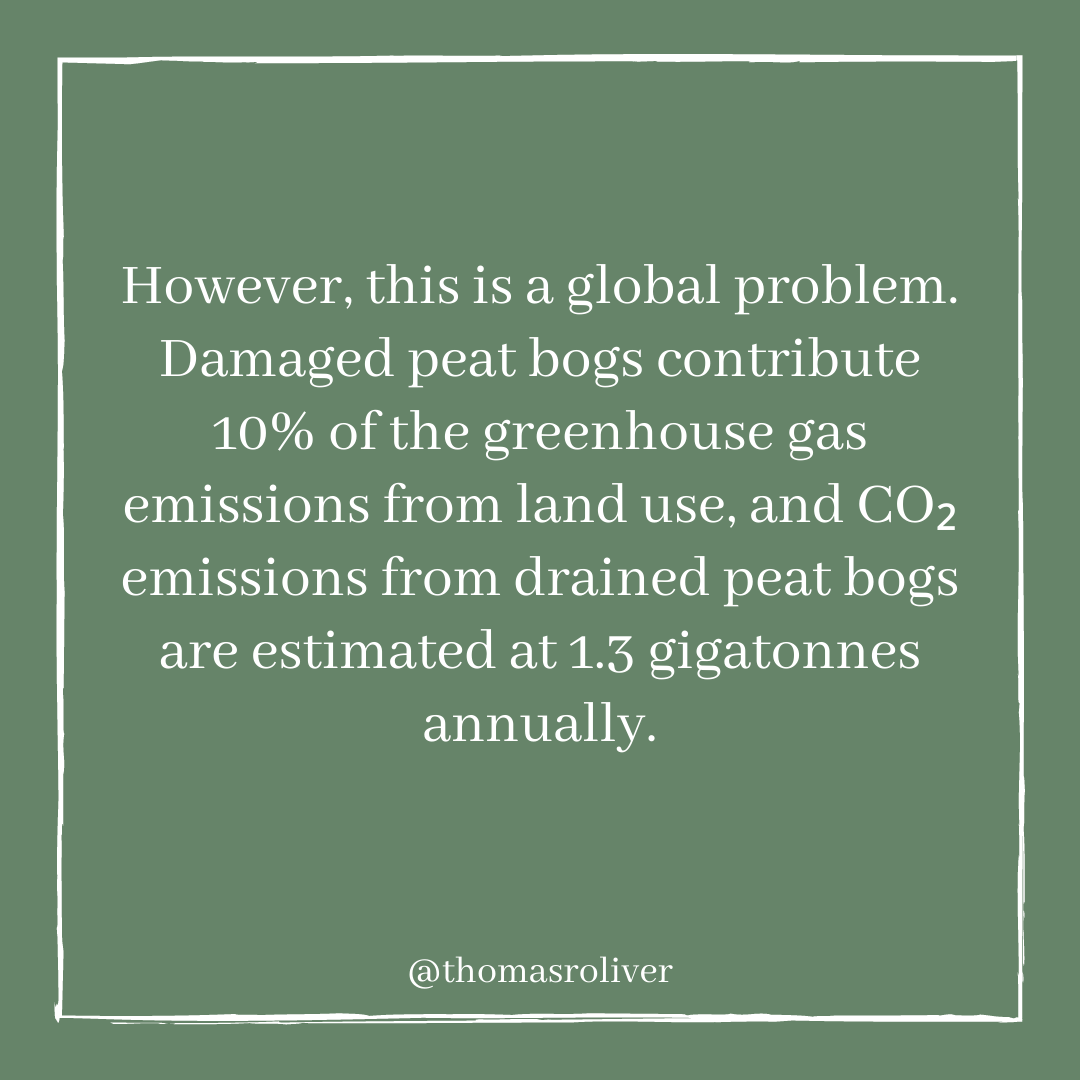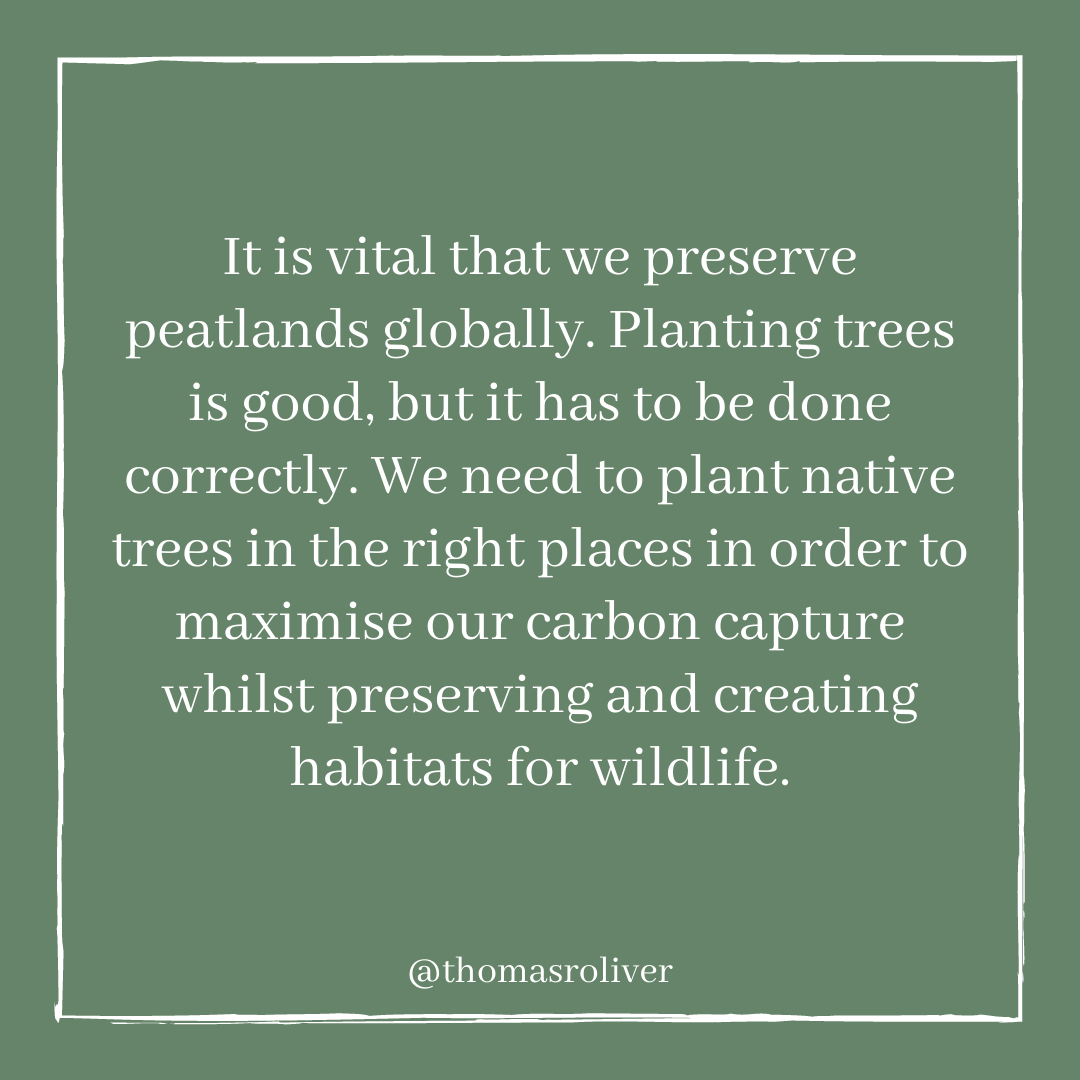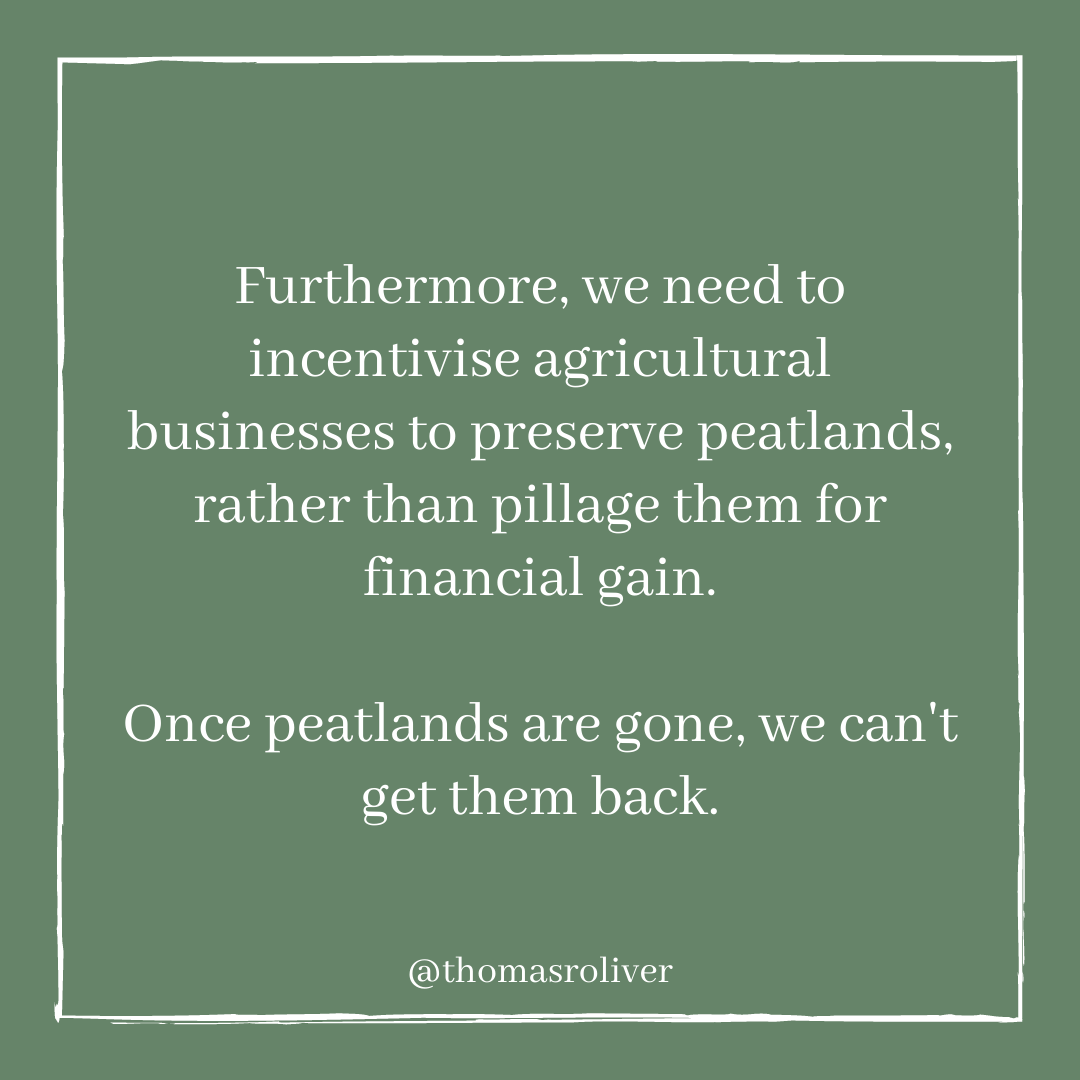Peatlands cover only 3% of the world's land surface, yet they store at least twice as much carbon as all of Earth's forests.
They are absolutely vital to reaching climate targets, but they are under threat.
They are absolutely vital to reaching climate targets, but they are under threat.
But what are peat bogs?
Peat forms in waterlogged conditions where a lack of oxygen prevents plant matter from decaying fully. Over thousands of years, layers of dead plant material accumulate to form peat.
Peat forms in waterlogged conditions where a lack of oxygen prevents plant matter from decaying fully. Over thousands of years, layers of dead plant material accumulate to form peat.
Peatlands purify water, mitigate flooding, accommodate rare species, and most importantly, they are the world's second largest carbon store after the oceans.
In other words, they are our most essential terrestrial ecosystem.
In other words, they are our most essential terrestrial ecosystem.
Agriculture, forestry, land fill, and peat extraction have devastated peatlands. In the UK, one of the greatest threats to peatlands is our continued use of peat based compost in gardening and agriculture.
Recently, the Forestry Commission gave permission for trees to be planted on peatlands throughout the UK, destroying them and releasing carbon into the atmosphere in the name of carbon capture. Ironic, isn't it?
However, this is a global problem. Damaged peat bogs contribute 10% of the greenhouse gas emissions from land use, and CO2 emissions from drained peat bogs are estimated at 1.3 gigatonnes annually.
It is vital that we preserve peatlands globally. Planting trees is good, but it has to be done correctly. We need to plant native trees in the right places in order to maximise our carbon capture whilst preserving and creating habitats for wildlife.
Furthermore, we need to incentivise agricultural businesses to preserve peatlands, rather than pillage them for financial gain.
Once peatlands are gone, we can't get them back.
Once peatlands are gone, we can't get them back.
For more information on this, please watch @joshual951 discussing this topic on Channel 4 news at the link below: https://www.channel4.com/news/forestry-commission-admits-it-was-wrong-to-allow-trees-to-be-planted-on-peat-bogs

 Read on Twitter
Read on Twitter
